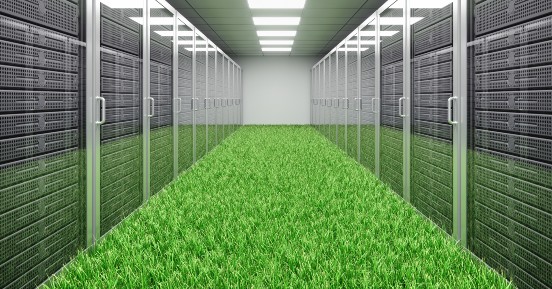5 questions to align your IT team with sustainability goals
Now more than ever organisations are being held accountable to demonstrate progress in achieving sustainability goals—IT asset disposition (ITAD) is an important part of this.

Now more than ever organisations are being held accountable to demonstrate progress in achieving sustainability goals—IT Asset Disposition (ITAD) is an important part of this.
By 2030, it’s predicted that e-waste will reach an annual 74 million metric tonnes. If you combine this with tech refresh cycles every two to four years, it’s easy to understand how e-waste is one of the fastest growing solid waste streams. If your IT team isn’t aligned with your organisation’s sustainability goals, there could be reporting challenges on the horizon.
Traditionally, organisations’ IT teams have been tasked with the secure disposition of IT assets in an environmentally responsible way. With the right systems and processes in place, your organisation can:
- Reduce e-waste that goes to landfills
- Reduce carbon emissions
- Extend the life of IT assets
So how does ITAD play an important role in helping to solve the challenge of excessive e-waste while meeting sustainability goals? Here are the five questions we recommend asking:
1. What is your carbon footprint?
If you’re not measuring your carbon footprint, it’s not possible to show progress toward your organisation’s sustainability commitments.
A great way to reduce and maintain a smaller carbon footprint is for your IT team to put retired assets through a responsible and sustainable disposition process. This includes recycling and repurposing retired equipment, which reduces the need for new equipment. By reducing the amount of e-waste that is sent to landfills, you help to limit the release of harmful gasses into the atmosphere. And as fewer devices are used or purchased, the energy and resources required to produce new equipment declines along with your carbon footprint.
2. How much of your e-waste goes into landfills?
When retired IT assets go into a landfill, precious metals can’t be recovered, toxic chemicals are leached into the soil, and harmful gasses are released into the air. Therefore, anything that can be done to reduce your organisation’s contribution to landfill waste ultimately benefits the environment.
With proper IT Asset Disposition, including recycling and refurbishing parts, your IT team can reduce the amount of hazardous e-waste that ends up in landfills. This is why keeping track of proper IT Asset Disposition versus what has to go in the landfill is crucial to supporting your sustainability efforts.
3. Are your IT assets included in your organisation’s recycling programme?
Your organisation should have a disposition plan for IT assets. If assets are being thrown in the trash, not only is the data being put at risk, but the potential value of the asset is lost. However, by actively choosing to recycle retired IT assets, your organisation is contributing to the larger circular economy, and you’re helping to reduce the amount of waste that goes into landfills.
4. Has your organisation considered remarketing its IT assets?
The more your organisation can eliminate or lessen its contribution to e-waste, the better it is for the environment. Remarketing your IT devices is another way to help extend the life of IT equipment and keep it out of the waste stream.
When IT devices are remarketed, their data is sanitised before being re-sold to other groups who can still use and get value out of them. Remarketing is the most beneficial way to support sustainability goals because it helps:
- Avoid or prolong the need to buy new IT equipment, which reduces costs
- Keeps the entire IT asset out of the landfill because it’s being deployed for a new use
- Lower energy consumption (older devices tend to be more efficient than newer models)
5. Have you done everything you can to extend the life of your IT devices?
Addressing questions like these helps to highlight how your IT Asset Disposition programme is or could be contributing to your organisation’s overall sustainability efforts. You are being accountable to sustainability goals by working to extend the life of your IT devices.
Or at the very least, these questions can help guide your IT Asset Disposition programme toward environmentally conscious practices like reducing landfill waste and energy usage.
A good way to share your sustainability progress with stakeholders is to work with your vendors to put together an environmental benefits report (EBR). If you work with Iron Mountain to support your IT Asset Destruction program, good news—we have an Environmental Benefits Report (EBR) that your IT team can use to show its environmental impact.
To learn more about our easy-to-consume report, check out our Environmental Benefits Report (EBR).
Featured services & solutions
IT Asset Disposition
Enhance security, improve sustainability, and protect your brand reputation with our ITAD services
Corporate responsibility at Iron Mountain
At Iron Mountain we understand the impact of our actions in our society and our planet. That's why our CSR commitment is present on everything we do.
Related resources
View More Resources


